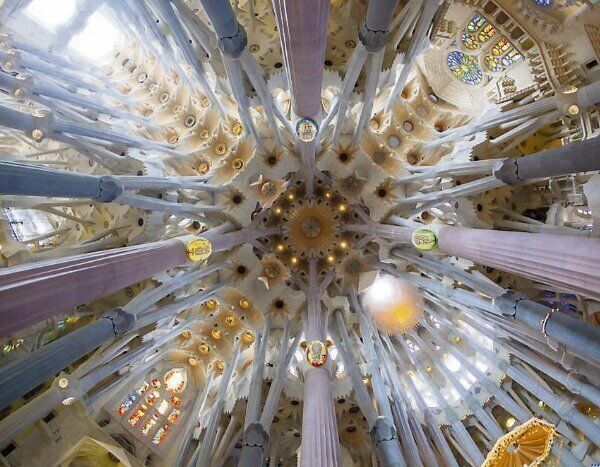Tree-like columns of Gaudi’s cathedral are a sacred sight

I reduced my five layers of insulation to four, and, stepping out of a bus on the balmy shores of Courtmacsherry Bay in the darkness, I quit yet another layer, and dragged the suitcases to the house in a positive glow.
I found a long note from my pal, neighbour, and dedicated nature observer, Kevin Hanly: it said that a female peregrine falcon had been haunting the green centre of the neat estate where he lives. Her behaviour, as he related it, was surely unusual.
I quote: “A female peregrine spent from 11am until 1pm on the green, alternating between the top of the street lights and the gutter pipes and roof tops. On the grass, she seemed to be picking on a small, clover-like plant, light green in colour, with two curved, white decals. I showed it to a neighbour, but he had little interest — each to his own. His marmalade cat, however, stalked the bird for a while, but the peregrine completely ignored it. Magpies, jackdaws and crows hanging about didn’t mob her, to my surprise.
“While I washed our car, my Springer spaniel was back and forth to the green, but the bird took not a blind bit of notice.
“You may recall that I told you a similar story in February, two years ago, when a hen peregrine spent two days in the same area, engaged in similar behaviour, and seemed to be picking at the same, clover-type plant.”
Today, immediately before writing this article, I visited the green and the plant, and found it to be white clover. Has any reader noticed such behaviour on the part of a peregrine, I wonder? I would like to know.
Opening the bedroom curtains on the first morning home, I was taken by the great beauty of our ‘domestic’ heron standing alongside the pond, his beak (it was a few weeks since I’d last seen him) become brilliant red, translucent in the sunlight, glancing off the wet pasture in the field beyond.
The grey plumage on his back resembled spun silk, or chenille, more than feathers, with three black pigtails falling on it from his crown. On the breast, the feathers were brilliant white, spotted with black, and trailing in a curtain below.
Lucky heron! While we were away, my son, noticing him gathering twigs to bring home to his mate — she builds the nest, he delivers the materials — supplied him with one now and then, and off he’d fly, a two-foot-long beech wand in his beak, soaring over the trees and rooftops.
So, a take-away twig for building, and a take-away lunch in his gullet. And then, to stand in the high-tops of the wood, monarch of all he surveys — lucky heron, indeed!
In Barcelona, the vista when one enters the cathedral of La Sagrada Familia almost lifts one off one’s feet and takes one soaring up into the vault, above the tops of the columns, which branch like trees (they are meant to replicate them) into the suffused light of the canopy.

Gaudi, the architect, began it in 1883 with the plans of a predecessor for a Gothic cathedral (as seen in Chartres, St Patrick’s in Dublin, Westminster Abbey, etc) and then, year by year, building models in plaster, found ways of supporting the structure, while increasing the empty spaces to let in more light.
That such an enormous structure could be so supported and yet be filled with light is a work of architectural genius.
Light, of course, is organic, ever-changing, and, pouring through the stained-glass windows, ever-uplifting.
Non-representational, stained in gradating colours of red, orange and blue, the plain, hard-edged panes are like framed shards of vast, broken windows, through which the outside light projects patterns on the enormous columns, the trunks of the stone ‘trees’ that support the roof and stone ‘foliage’ above.
Light invokes the spiritual, and the soaring illusion has, I’m sure, been felt by many who have been fortunate enough to visit this great work of art. Gaudi, born in 1852, didn’t live to see it finished, and knew he wouldn’t. Killed by a streetcar in 1926, it is hoped that his life’s work will be completed in 2026.













